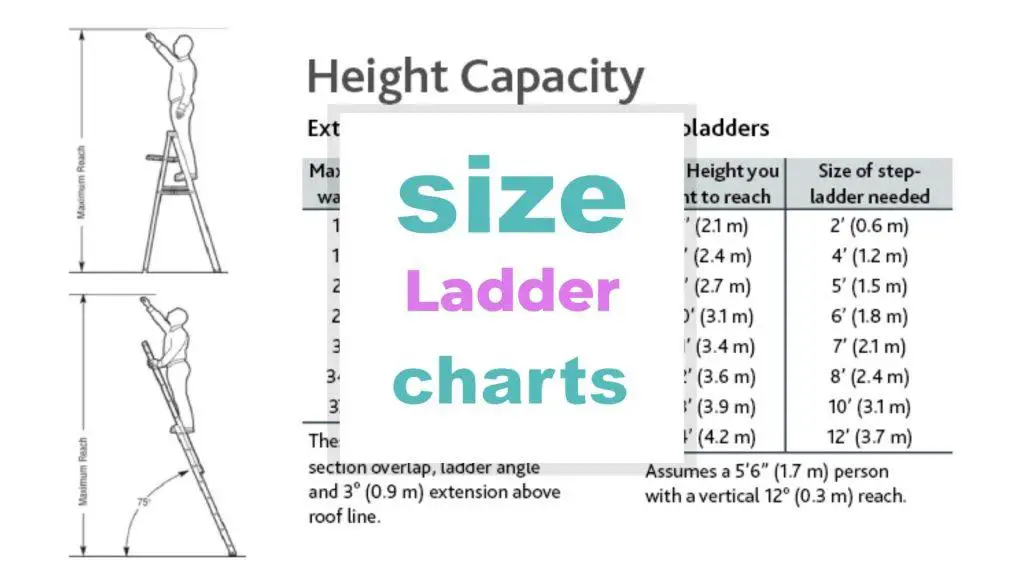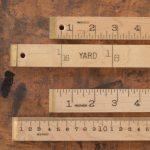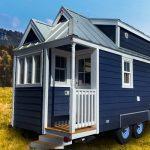Ladder Size Chart and Dimensions: What size of ladder do I need?
A ladder is a structure you can use to climb up and down vertical surfaces when you can’t easily reach what you want. There are many types of ladders, and each has a unique purpose. If you buy the wrong ladder size, you won’t handle your project as easy as you hope (skip straight to the Ladder Size Chart).
This post will cover the various ladder size charts, choosing the right ladder, and the best way to stay safe when using ladders.

Let’s get started!
Jump right into the Frequently Asked Questions
Related: Rug Size for Living room use, compared to table and sofa size, Gravel Size Chart and Different Types explained with pictures
Table of Content
- Ladder Size Chart
- How to Choose the Right Ladder for Your Project
- Types of Ladder Materials
- How to Ensure Ladder Safety
- Frequently Asked Questions
Ladder Size Chart
Related: Window Sizes Chart and How to Measure window dimensions?, Average Master Bedroom Size: How Big Is A Master Bedroom?
Step Ladder Size Chart
| Ladder Height (feet) | Ladder Height (meters) | Maximum Reach (feet) | Maximum Reach (meters) |
| 4 Feet | 1.2 m | 8 Feet | 2.4 m |
| 6 Feet | 1.8 m | 10 Feet | 3.0 m |
| 8 Feet | 2.4 m | 12 Feet | 3.7 m |
| 10 Feet | 3.0 m | 14 Feet | 4.3 m |
| 12 Feet | 3.7 m | 16 Feet | 4.9 m |
| 14 Feet | 4.3 m | 18 Feet | 5.5 m |
| 16 Feet | 4.9 m | 20 Feet | 6.1 m |
| 18 Feet | 5.5 m | 22 Feet | 6.7 m |
| 20 Feet | 6.1 m | 24 Feet | 7.3 m |
Extension Ladder Height Chart
| Ladder Height (ft) | Ladder Height (meters) | Maximum Height (ft) | Maximum Height (meters) | Highest Point You Can Touch | Highest Point You Can Touch |
| 16 Feet | 4.9 m | 15 Feet | 4.6 m | 9 Feet | 2.7 m |
| 20 Feet | 6.1 m | 19 Feet | 5.8 m | 9 to 13 Feet | 2.7 to 4 m |
| 24 Feet | 7.3 m | 23 Feet | 7 m | 13 to 17 Feet | 4 to 5.2 m |
| 28 Feet | 8.5 m | 27 Feet | 8.2 m | 17 to 21 Feet | 5.2 to 6.4 m |
| 32 Feet | 9.8 m | 31 Feet | 9.4 m | 21 to 25 Feet | 6.4 to 7.6 m |
| 36 Feet | 11 m | 34 Feet | 10.4 m | 25 to 28 Feet | 7.6 to 8.5 m |
| 40 Feet | 12.2 m | 37 Feet | 11.3 m | 28 to 31 Feet | 8.5 to 9.4 m |
Telescoping, Single, and Straight Ladder Size Chart
| Ladder Height (ft) | Ladder Height (meters) | Maximum Reach (ft) | Maximum Reach (meters) | Highest Point You Can Touch | Highest Point You Can Touch |
| 16 Feet | 4.9 m | 15 Feet | 4.6 m | 9 Feet | 2.7 m |
| 20 Feet | 6.1 m | 19 Feet | 5.8 m | 9 to 13 Feet | 2.7 to 4 m |
| 24 Feet | 7.3 m | 23 Feet | 7 m | 13 to 17 Feet | 4 to 5.2 m |
| 28 Feet | 8.5 m | 27 Feet | 8.2 m | 17 to 21 Feet | 5.2 to 6.4 m |
| 32 Feet | 9.8 m | 31 Feet | 9.4 m | 21 to 25 Feet | 6.4 to 7.6 m |
| 36 Feet | 11 m | 34 Feet | 10.4 m | 25 to 28 Feet | 7.6 to 8.5 m |
| 40 Feet | 12.2 m | 37 Feet | 11.3 m | 28 to 31 Feet | 8.5 to 9.4 m |
Ladder Load Capacity Chart
| Ladder Type | Load Capacity (lbs.) | Load Capacity (kgs) | Brief Description |
| TYPE-IAA | 375 lbs. | 170 kgs | Special duty |
| TYPE-IA | 300 lbs. | 136 kgs | Extra Heavy-duty |
| TYPE-I | 250 lbs. | 113 kgs | Heavy duty |
| TYPE-II | 225 lbs. | 102 kgs | Medium duty |
| TYPE-III | 200 lbs. | 91 kgs | Light duty |
Ladder Accessory Weights
| Accessories List | Approximate Weight (lbs.) | Approximate Weight (kgs) |
| Toolbox with toolset | 30 – 35 lbs. | 13.6 – 15.9 kgs |
| Ceiling fan | 25 – 30 lbs. | 11.3 – 13.6 kgs |
| Portable spray | 15 – 20 lbs. | 6.8 – 9.1 kgs |
| Sheet of plywood | 70 – 80 lbs. | 31.8 – 36.3 kgs |
| 5 gallons of the paint bucket | 55 – 60 lbs. | 24.9 – 27.2 kgs |
Gutter height vs Ladder Size chart (which ladder size to buy)
| Height to Gutter or Support Point | Buy This Size Ladder (include a 3-foot extension above the roof line) |
|---|---|
| 9-foot max. | 16-foot |
| 9 to 13 feet | 20-foot |
| 13 to 17 feet | 24-foot |
| 17 to 21 feet | 28-foot |
| 21 to 25 feet | 32-foot |
| 25 to 28 feet | 36-foot |
| 28 to 31 feet | 40-foot |
| Max. Height You Want to Reach | Buy This Size Ladder (assumes vertical 12-inch reach) |
|---|---|
| 7 feet | 3-foot |
| 8 feet | 4-foot |
| 9 feet | 5-foot |
| 10 feet | 6-foot |
| 11 feet | 7-foot |
| 12 feet | 8-foot |
| 14 feet | 10-foot |
| 16 feet | 12-foot |
| 18 feet | 14-foot |
| 20 feet | 16-foot |
How to Choose the Right Ladder for Your Project
Related: Pipe Sizing Chart and Different Types, Pallet Dimensions and Types by industries in inches & centimeter
There are numerous types of ladders created for different purposes. Before you buy a ladder that isn’t ideal for your project, you should learn about the various options.
Types of Ladders
1. Step Ladders
These are among the most popular ladders you can find. When open, this ladder takes an A shape to provide stability for the user. Step ladders can either be simple-front or twin-step. The simple front design allows you to climb from one side while you can climb a twin-step ladder from both sides.
Also known as a trestle ladder, a twin-step ladder is great when two people need to use the ladder at the same time. They feature a sturdy build that can support more weight than a step ladder.
You don’t need to support a step ladder since it’s a self-supporting one that can stand independently. This type of ladder is commonly used in homes since it helps when you want to reach items in high places, draw curtains, and clean windows.
The best step ladder height should allow at least four feet of the work area for ideal safety. For instance, if you want to reach a ceiling height of 12 feet, you need a step ladder of 8 feet.
2. Extension Ladders
An extension ladder is a non-self-supporting portable ladder. It requires a vertical platform such as a wall or a tree to lean against. Extension ladders have two parts; a base frame with a fixed height and a flying part extending above the base.
This ladder is quite versatile and can be used indoors and outdoors. When fully extended, you can use this ladder to reach the roof eave or paint high walls.
3. Attic Ladder
Also known as a loft ladder or pull-down attic stair, this is the one you find in the attic that you use to climb up to your ceiling. Unfortunately, an attic ladder isn’t portable, so you can only use it to access your attic.
This ladder comes in a drop-down or foldable design, which requires permanent installation. It eliminates the need to build a staircase that leads to the attic making it a convenient choice.
4. Telescoping Ladders
Another popular type of ladder is the telescoping ladder. It is adjustable, making it a great choice if you need to reach different heights at different times. It’s like a straight ladder, but you can extend it to make it longer or reduce it to make it shorter, depending on your needs.
Telescoping ladders are great because they are affordable and lightweight. As such, you can easily carry a telescoping ladder to where you need it without hassle. It also offers ease of storage compared to regular ladders since it can fit in compact spaces.
5. Step Stools
While a step stool sounds similar to a step ladder, it has a different design altogether. A step stool is a small ladder people use to access shorter heights like cupboards, racks, and shelves. Unlike a step ladder, this one doesn’t provide a place to hold it as you stand on it.
Since it has a compact design and is foldable, this type of ladder is quite easy to store. It’s suitable for indoor tasks since it has a maximum of four steps which won’t help users reach great heights. Plus, they are also cheaper than full-size ladders.

6. Platform Ladders
Like a step ladder, a platform ladder features an A-shaped frame. However, it has a platform at the top where you can stand or place accessories. If you are handling a project that requires you to use your hands and feet, this is the best ladder to get.
This self-supporting ladder is great because it provides a steady platform to place your feet. As a result, you can use it for longer than a regular ladder without fatigue or discomfort. It’s a mobile ladder you can use to paint walls, garden, or reach the ceiling.
7. Folding Ladders
This is another type of self-supporting ladder that can help you reach higher than a step ladder can. The design of a folding ladder allows you to bend it at different ladder sections to reach areas that are difficult to access.
This ladder can make it easier to perform tasks like changing bulbs, hanging curtains, or cleaning inaccessible areas.
Since you can fold this ladder into a smaller design, it’s easy to store without reorganizing your garage. These ladders also come with sturdy and slip-resistant feet that keep them stable enough to use without wobbling or falling.
8. Multipurpose Ladders
Multipurpose or combination ladders are perhaps the most unique. They are designed to adapt to various scenarios making them ideal for those in construction or similar jobs. You can adjust this ladder to suit your needs in different ways. It can function as a step, telescoping, extension ladder, etc.
This ladder can take multiple positions to aid the user in the task. If you tend to use ladders of different heights and designs regularly, this one will save you a lot of money. It’s ideal for indoor and outdoor projects and can make it easier to access high areas.
9. Job-Made Ladders
These ladders are specially designed for construction or demolition projects. Unlike the other types of ladders we’ve covered, these don’t function as a workstation. Instead, they are made to provide access to work areas.
They are usually made from wood and are temporary because they are only used until a particular operation is complete.
10. Warehouse Ladders
A warehouse ladder is one that’s mostly used in the warehouses of various factories and industries. It has a wider design than most ladders allowing users to carry items up and down the warehouse storage compartments.
These ladders come with wheels so you can move them from one facility section to another. They also feature heavy-duty construction to support heavier weights.
11. Library Ladders
You’ll find this ladder type in libraries. It provides librarians with access to books stored on high shelves for easier retrieval. Library ladders usually come with long rails and wheels, allowing you to place them in the section you need a book. It has a solid build and a multifunctional design that some homeowners use at home.
Learn more about different types of Ladders and Ladder Size Chart (video)
Types of Ladder Materials
Related: Bath Size Chart and Sizing Guide, Ventilation Hood Size Guide and dimensions for your kitchen, Headboard Size: what Dimensions needed for king, queen,… beds?
Ladders are made from different materials. Let’s check out the most common ladder materials in this section. Based on the material the ladders come in a different ladder size chart.
1. Wooden Ladders
Wood is the oldest and most common material for making ladders. Ladders made of wood are affordable and can’t conduct electricity, making them a safe choice when handling electrical projects. Unfortunately, these ladders aren’t the most durable and are heavy to carry around.
2. Aluminum Ladders
Aluminum is among the best materials for ladders because it can be recycled and is lightweight. It can also withstand heavy weights compared to other ladder materials. Unfortunately, using it for electrical projects can be risky because of the chances of electrocution.
3. Fiberglass Ladders
Fiberglass ladders are the most durable option but also heavy and expensive. It’s a great choice if you want a ladder for professional tasks or home use. Fiberglass is non-conductive, making it safe for handling near electrical lines.
4. Steel Ladders
Steel is among the strongest materials making it ideal if you want a heavy-duty ladder for industrial applications. Unfortunately, to keep a steel ladder from chemical corrosion, you’ll need to perform regular maintenance.
How to Ensure Ladder Safety
Related: Average pool size explained by type of pool, Interior Doors Sizes: Minimum & standard dimensions, Comforter Size Chart and Different Types by bed size
There are some considerations to remember when choosing a ladder to ensure you are safe when climbing up and down. Reducing dangerous ladder selection mistakes can help minimize workplace and household accidents. Let’s discuss these factors below.
1. Working Surface
It’s essential to check the place you want to use your ladder and ensure it’s well-leveled. Most ladders have flat feet, which are meant to stand on flat areas. Uneven surfaces pose a lot of risk to ladder users since the ladder could topple over while you are climbing, leading to injury.
You should minimize the chances of instability by placing the ladder on an evenly leveled surface.
2. Shoes
You must also wear safety shoes when using ladders to avoid slips as you climb up and down. Avoid flat-soled shoes at all costs when using a ladder because they won’t protect you if your foot slips. Wearing a heeled shoe will ensure you can keep the ladder step in the heel area where you can fasten your foot.
Also, ensure the shoes feature a durable, slip-resistant surface that can help you remain stable as you use the ladder.
3. Locking mechanism
You should check for a ladder safety system when using a platform, step, or telescoping ladder. This is especially important for fold or bend ladders since you wouldn’t want them to collapse as you stand on them.
4. Load Capacity
Every ladder has the maximum amount of weight it can withstand. This is known as the load capacity. Before buying it, you should know the load capacity you need in a ladder to ensure it can hold up firmly as you work. The total weight capacity should include the weight of your accessories, clothes, and other items you’ll carry on the ladder.
Frequently Asked Questions
1. What is a standard-size ladder?
A standard ladder can measure anything from 4 to 20 feet tall.
2. How do I know what size ladder I need?
Your ideal ladder size depends on the height you want to reach and how much you weigh.
3. Do I need a 6 ft or 8 ft ladder?
You should get a ladder that leaves four feet of workspace above you.
4. What are the 3 types of ladders?
Straight ladders, step ladders, and extension ladders are the most common types of ladders you can buy.
5. What length ladder do I need for a 2-story house?
For a two-story house, your ladder should be about 28 feet in length.
6. What is the 4-to-1 rule when using a ladder?
The rule holds that you should extend the ladder a foot wider for every four feet of height the ladder reaches.
7. How high can a 24-foot ladder reach?
A 24-foot ladder can reach up to 23 feet when extended.
Conclusion
Ladders are useful tools that help you reach places you can’t naturally access. However, different ladders are designed for various functions, so you need to determine the purpose of the ladder before buying.
There are ladders that you can extend beyond the regular height if you want to high areas like roofs and eaves. Ladders are made of different materials, and you can choose one according to your budget and the level of durability you need. The load capacity of your ladder is also essential since it helps you select a ladder that can withstand what you need to carry up or down.
You may leave any questions about ladder sizes in the section below!
Picture in this post is by Xin on Unsplash
Related to Ladder Size Chart
- Barbie Doll Size : What are different sizes of Barbie ?

- Blanket sizes chart : blanket sizes and dimensions in inches & cm

- Tablecloth size chart – What are standard tablecloth sizes ?

- How Many Meters Are In A Yard?

- How Many Centimeters are 8 Inches?

- Knife Sizes and Different Types

- 4 Inches is How Many Centimeters?

- Light Bulb Base Sizes : What size light bulb base do I need?

- Tesalate Towel Size Guide

- Light bulb Size : What are the different and standard bulb sizes?

- Duvet Sizes: What is a Standard-Size Duvet?

- Single Car Garage Size and Dimensions

- How High Is A Story?

- How Much Does 1 Cup Of Rice Weigh?

- Cast Iron Skillet Sizes: What Size Do I Need?

- Dollar Bills Size Chart

- Pizza Sizes: Which One to Order?

- How To Measure A Foot Without A Ruler

- Wine Glass Size Chart

- Tiny Houses Size Charts





















